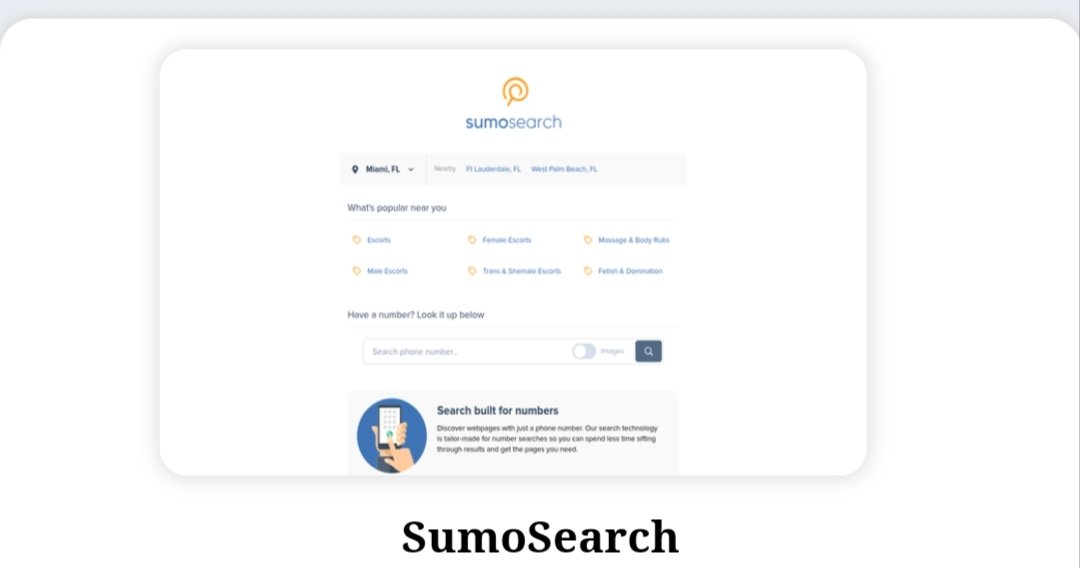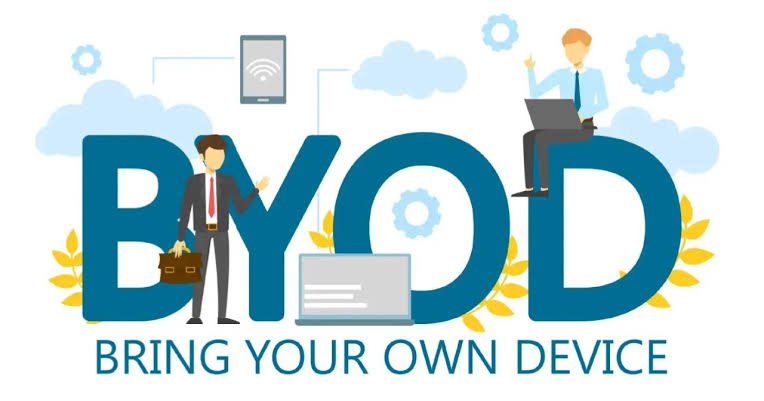Blog
Mastering Local SEO with SumoSearch: Your Ultimate Guide

In the digital age, where the internet reigns supreme, local businesses must leverage online tools to attract nearby customers. One such potent tool is SumoSearch, a comprehensive platform designed to enhance local SEO efforts. Understanding how to utilize SumoSearch effectively can significantly boost your local business’s online visibility, drive traffic, and ultimately increase sales. This guide delves into the intricacies of SumoSearch, offering practical insights on how to master local SEO with this powerful tool.
Understanding Local SEO
Local SEO (Search Engine Optimization) is the practice of optimizing a business’s online presence to attract more customers from relevant local searches. These searches take place on Google and other search engines. A strong local SEO strategy is crucial for businesses with a physical location or those serving a specific geographic area. It helps them appear in local search results, making it easier for potential customers to find them.
The Importance of Local SEO
Local SEO is essential for several reasons:
- Increased Online Visibility: Higher rankings in local search results mean more visibility for your business. When potential customers search for services or products you offer, appearing at the top of the search results increases the chances of them visiting your website or physical store.
- Targeted Traffic: Local SEO helps you attract customers who are specifically looking for businesses like yours in their area. This targeted traffic is more likely to convert into sales compared to general traffic.
- Competitive Advantage: By optimizing your local SEO, you can stand out from competitors who may not be utilizing these strategies. This can be particularly beneficial for small businesses competing with larger, more established companies.
- Mobile Search Optimization: With the increase in mobile device usage, many local searches are conducted on smartphones. Local SEO ensures that your business is easily found by these mobile users, who are often looking for immediate results.
Introducing SumoSearch
SumoSearch is a versatile tool designed to help businesses improve their local SEO efforts. It offers a suite of features that make it easier to manage and optimize your online presence. Some of the key features include:
- Keyword Research: SumoSearch helps you identify the most relevant keywords for your business. By targeting these keywords, you can improve your search engine rankings and attract more local traffic.
- Local Listings Management: Ensuring your business information is accurate and consistent across various online directories is crucial for local SEO. SumoSearch simplifies this process by allowing you to manage your listings from a single platform.
- Review Management: Online reviews play a significant role in local SEO. SumoSearch helps you monitor and respond to reviews, encouraging positive feedback and addressing any negative comments promptly.
- Competitor Analysis: Understanding what your competitors are doing can provide valuable insights for your own SEO strategy. SumoSearch offers tools to analyze your competitors’ online presence and identify opportunities for improvement.
- Analytics and Reporting: Tracking your SEO performance is essential for making informed decisions. SumoSearch provides detailed analytics and reporting features, allowing you to measure the effectiveness of your efforts and adjust your strategy as needed.
Steps to Master Local SEO with SumoSearch
Now that we have an overview of SumoSearch and its features, let’s dive into the steps you can take to master local SEO using this tool.
1. Conduct Thorough Keyword Research
Keyword research is the foundation of any successful SEO strategy. Start by identifying the keywords that potential customers are using to search for businesses like yours. SumoSearch’s keyword research tool can help you discover high-traffic, low-competition keywords that are relevant to your business.
Focus on long-tail keywords, which are more specific phrases that often have lower competition. For example, instead of targeting “restaurant,” you might target “family-friendly restaurant in [Your City].” Long-tail keywords can attract more qualified traffic and improve your chances of ranking higher in search results.
2. Optimize Your Website
Once you’ve identified your target keywords, it’s time to optimize your website. Ensure that your website’s content, meta tags, and URLs include these keywords naturally. Avoid keyword stuffing, as this can negatively impact your rankings.
Pay attention to on-page SEO elements such as title tags, meta descriptions, header tags, and image alt text. SumoSearch can provide recommendations for optimizing these elements to improve your website’s SEO.
3. Manage Local Listings
Consistency is key when it comes to local listings. Ensure that your business name, address, and phone number (NAP) are consistent across all online directories. SumoSearch’s local listings management feature makes it easy to update your information across multiple platforms simultaneously.
Claim and verify your business listings on major directories such as Google My Business, Yelp, and Bing Places. This can improve your local search rankings and provide potential customers with accurate information about your business.
4. Encourage and Manage Reviews
Online reviews are a crucial factor in local SEO. Positive reviews can enhance your credibility and attract more customers, while negative reviews can harm your reputation. Use SumoSearch to monitor and respond to reviews across various platforms.
Encourage satisfied customers to leave positive reviews by providing exceptional service and asking for feedback. Address negative reviews promptly and professionally, showing that you value customer feedback and are committed to improving your business.
5. Analyze Competitors
To stay ahead of the competition, you need to understand what your competitors are doing. Use SumoSearch’s competitor analysis tools to identify their strengths and weaknesses. Look at their keywords, backlinks, and overall online presence.
Identify areas where you can outperform your competitors, such as offering unique services, optimizing for less competitive keywords, or improving your customer service.
6. Track and Adjust Your Strategy
SEO is an ongoing process, and it’s essential to track your performance regularly. Use SumoSearch’s analytics and reporting features to monitor your website’s traffic, keyword rankings, and other key metrics.
Analyze the data to identify what’s working and what needs improvement. Adjust your strategy based on these insights to ensure continuous growth and success in your local SEO efforts.
Conclusion
Mastering local SEO with SumoSearch can significantly enhance your business’s online presence and attract more local customers. By conducting thorough keyword research, optimizing your website, managing local listings, encouraging reviews, analyzing competitors, and tracking your performance, you can stay ahead of the competition and achieve long-term success.
Remember, local SEO is not a one-time task but an ongoing effort. Stay up-to-date with the latest SEO trends and continually refine your strategy to ensure your business remains visible and relevant in local search results. With SumoSearch as your ally, you have the tools and insights needed to navigate the complexities of local SEO and drive your business toward success. Enjoy Hint Today.
Blog
Effective BYOD Strategies for the Modern Workplace


Introduction to BYOD
Bring Your Device (BYOD) guidelines are spreading throughout the globe’s workplaces. Under these policies, employees are permitted to use personal gadgets, including tablets, laptops, and cellphones, for work. Adopting BYOD can provide various benefits but also introduces some risks and challenges. Organizations need to understand how to implement and manage these policies effectively to ensure their success. You can explore additional resources from reliable sources for further details on what BYOD entails.
Businesses continually seek ways to enhance productivity, cut costs, and improve employee satisfaction. BYOD is one strategy that can address all these needs. However, implementing a BYOD policy requires careful consideration and planning to ensure it doesn’t compromise the organization’s security and regulatory requirements.
Benefits of BYOD for Businesses
Increased Productivity
Allowing employees to use devices they are already familiar with can significantly boost productivity. Employees feel more comfortable using their devices, which can lead to increased efficiency and quicker adaptation to new software. Studies have shown that employees who use their own devices often complete tasks more quickly and with higher quality.
Cost Savings
By leveraging employees’ devices, companies can drastically reduce hardware expenses. This cost-saving measure decreases the need for company-purchased devices and reduces maintenance and support costs. The financial savings can then be redirected toward other crucial areas such as development, marketing, or employee training programs.
Enhanced Employee Satisfaction
Employees often prefer using their devices because they are accustomed to their configurations and functionalities. This comfort level can lead to higher job satisfaction and increased employee retention. The flexibility to use personal devices can also make a company more attractive to potential hires, enhancing overall talent acquisition efforts.
Challenges and Risks
Security Risks
One of the most significant challenges of a BYOD policy is ensuring company data security. Personal devices may not have the same security measures as company-issued hardware, making them vulnerable to cyber threats. Several security risks are associated with BYOD, including potential data breaches and malware infections. Maintaining comprehensive security protocols is essential to mitigate these risks.
Compliance Issues
A BYOD policy must adhere to industry standards and rules. It can be difficult to ensure that personal devices follow these rules, especially in sectors like healthcare and banking, where compliance standards are stringent. This issue needs careful attention because non-compliance can result in costly fines and harm to the company’s reputation.
Data Management Concerns
Managing data across numerous personal devices can complicate data management processes. IT teams must ensure data is accessible and secure without compromising company policies or employee privacy. Effective data management strategies are crucial for maintaining the integrity and confidentiality of sensitive information.
Implementing a BYOD Policy
Effective implementation of a BYOD policy involves several critical steps:
- Clear Usage Guidelines: Establish explicit guidelines outlining what devices are permitted, acceptable uses, and prohibited activities. Ensuring that workers know the obligations and limitations related to using their devices for work requires open communication.
- Security Protocols: Implement robust security measures, such as encryption, to protect sensitive information. Frequent security updates and patches should be mandated to keep the devices secure.
- Support and Training: Provide employees with the necessary support and training to ensure they understand and adhere to the BYOD policy. By attending regular training sessions and using available resources, employees may stay educated about emerging hazards and best practices.
Best Practices for BYOD Management
Regular Security Audits
Conduct regular security audits to identify and mitigate potential vulnerabilities in personal devices. These audits help ensure compliance with company policies and industry regulations. Regular assessments can also offer insights into the effectiveness of current security measures and areas needing improvement.
Employee Education Programs
Inform staff members of security best practices and stress the value of following the BYOD policy. Ongoing training can reduce risk and foster a security-aware culture inside the company. Incorporating interactive and engaging techniques for these kinds of seminars can greatly increase their impact.
Effective Device Management Solutions
Utilize comprehensive device management solutions to monitor and control access to company resources. These solutions can help secure data and ensure policy compliance. Mobile Device Management (MDM) and Endpoint Security can provide greater control and oversight over personal devices accessing company data.
Security Measures for BYOD
Encryption
Encrypting data on personal devices is essential to protect sensitive information from unauthorized access. Ensure all data stored on devices and transmitted between devices is encrypted. Encryption provides an additional layer of security, making it more challenging for malicious actors to access company data.
Remote Wipe Capabilities
Enable remote wipe capabilities to protect data from device loss or theft. This feature allows IT teams to remotely delete data from a device, preventing unauthorized access to company information. Remote wipes ensure that the data remains protected even if a device falls into the wrong hands.
Real-world Examples
Several organizations have successfully implemented BYOD policies, showcasing the potential benefits and challenges. For instance, a leading tech firm noted a 15% increase in productivity after adopting a BYOD strategy. This real-world example highlights how a well-planned BYOD policy can drive efficiency and employee satisfaction. Another example is a healthcare provider that improved patient care by enabling doctors to access health records through their tablets, demonstrating how BYOD can enhance operational efficiency and service delivery.
Conclusion
Adopting a BYOD policy can offer significant advantages for modern workplaces, including increased productivity, cost savings, and enhanced employee satisfaction. However, businesses must consider the associated risks carefully and implement robust security measures to protect sensitive information. Organizations can create effective strategies to successfully implement BYOD policies and maximize their potential by understanding the benefits and challenges. Balancing flexibility with security will be vital to navigating the complexities of BYOD in today’s digital age. Enjoy Hint Today.
Blog
Effective Ways to Use Dating Apps to Find Exactly What You Are Looking For


Choosing the Right Platform
The dating app industry continues to see high user engagement. Reports indicate approximately 366 million users in 2022, a significant increase from 240.9 million in 2016. This surge illustrates the broad acceptance and utilization of online dating. User preferences differ significantly by age group. Individuals aged 18-29 predominantly use Tinder, while users aged 30-64 show a preference for Match.com, which focuses on fostering serious relationships. For those over 65, eHarmony and religious dating sites tend to be more popular. This variation suggests the critical importance of selecting a platform that aligns with personal relationship objectives.
LGBTQ individuals are more likely to use dating apps than their straight counterparts. According to Pew Research, 55% of LGBTQ adults have used dating apps, whereas the figure stands at 28% for straight adults. Moreover, 21% of LGBTQ online daters have been in a committed relationship or married someone they met through a dating app, compared to 11% among straight users. This highlights the significant role dating apps play in facilitating relationships within the LGBTQ community.
User Experience and Satisfaction
User experiences on dating apps vary. Approximately 41% of users describe their experience as positive, while 32% rate theirs as negative. Another 27% found their experience to be neither positive nor negative. Men and women report similar satisfaction levels. The nature of relationships sought also affects satisfaction. Among users, 41% were exclusively looking for serious relationships, while 39% were open to both serious and casual relationships. Younger users (18-29) show a lower inclination towards seeking only serious relationships.


Dating app use can lead to “app fatigue.” According to a Forbes Health survey, 79% of Gen Z users report feelings of burnout from dating apps. The abundance of choices and the pressure to present an idealized self contribute to this fatigue. Additionally, safety remains a concern, with only 48% of U.S. adults considering online dating to be somewhat or very safe. Women, in particular, are more likely to perceive online dating as unsafe. This data underscores the necessity for improved safety measures and user education on these platforms.
Selecting a Suitable Partner
Different datings apps serve different relationship goals. Apps like eHarmony, OkCupid, Hinge, and Coffee Meets Bagel are designed to facilitate meaningful connections, making them more suitable for users seeking serious relationships. Conversely, Tinder and Grindr are more popular for casual engagements. Understanding the distinctive characteristics of these apps is crucial for choosing the right one that fits individual relationship goals. Approximately 44% of adults use dating apps to find long-term partners rather than for casual dating or hookups.
The success rate of online-formed relationships is comparable to those formed offline. SSRS reports that 61% of adults believe that relationships forged on dating sites or apps are just as successful as those begun offline. However, 34% think they are generally less successful. Among dating app users, 42% have been in a committed relationship with someone they met online. Higher success rates are noted among users aged 30-49.
When setting up a profile on a dating app, specifying what type of relationship you are seeking can prevent misunderstandings. For example, someone might be looking for a lifelong partner, another person might be interested in casual meetups, or someone could be aiming for a unique arrangement like being a sugar daddy. Being upfront about your intentions will help you connect with people who share similar goals and ensure a more fruitful interaction.
Demographic Preferences
Statistics highlight varying preferences across different demographic segments. Pew Research indicates that 19% of U.S. internet users currently use online dating platforms, and 27% have used them in the past. This usage spans various demographics, emphasizing that online dating is widely accepted among internet users. Despite this acceptance, concerns about safety and app fatigue remain pertinent issues.
Within the dating app market, certain apps maintain a dominant position. Tinder is the most popular app in the U.S. and Europe, followed by Bumble and Hinge. These apps have specific features and target different demographics, which contributes to their widespread popularity. The industry generated $5.34 billion in revenue in 2022, with Match Group accounting for $2.8 billion of that. Enjoy Hint Today.
Blog
The Benefits of Living in Small Towns: A Comprehensive Guide


Introduction
More people are considering moving to smaller towns for various reasons. This guide explores the many benefits of living in a small town, from the sense of community to access to outdoor activities. Located in California, Ojai offers a unique blend of natural beauty and a close-knit community, making it an attractive option for many.
Living in a small town can offer a range of benefits not typically found in larger cities. From a more affordable cost of living to a close-knit community, the appeal of small towns is growing. Unlike metropolitan areas, where the pace is fast and overwhelming, small towns allow residents to slow down and enjoy the simpler things in life. Whether it’s a town like Ojai or another charming locale, the essence of small-town living can be profoundly rewarding.
Sense of Community
One of the most appealing aspects of small-town living is the strong sense of community. Unlike in larger cities where anonymity is common, small towns foster close-knit relationships. For those looking to make a move, considering Ojai homes for sale could be an excellent start. Neighbors often know each other by name and look out for one another, contributing to a supportive environment. For example, in small towns, community events, local fairs, and friendly gatherings are rare in larger metropolitan areas. This particularly benefits families raising children in a nurturing environment with solid communal values and support networks.
Cost of Living
The cost of living in small towns is typically lower than in urban areas. From housing to groceries, expenses are more manageable. This can be a significant advantage for families and individuals looking to stretch their budgets further. According to a report by CNBC, people moving from large cities to smaller towns often experience a dramatic reduction in living costs, allowing them to save or invest in other areas of life. This economic advantage can be a game-changer, particularly for retirees looking to make the most of their fixed income or young families just starting.
Mental and Physical Well-being
Living in a small town can positively affect mental and physical health. Lower stress levels, less pollution, and a slower pace of life contribute to overall well-being. The proximity to nature also encourages physical activities like hiking and cycling, which are suitable for the body and mind. A BBC study shows that a slower-paced lifestyle can significantly improve mental health, reducing stress and anxiety levels. Additionally, the reduced noise and air pollution in smaller towns can lead to better respiratory health, making it a healthier environment overall.
Access to Nature and Outdoor Activities
Small towns are often surrounded by natural beauty. Living in a small town usually means easy access to outdoor adventures, whether it’s mountains, forests, or rivers. This natural accessibility fosters a lifestyle that includes regular outdoor activities, such as hiking, fishing, and camping, which are great for physical fitness and mental relaxation. The availability of these activities can also create opportunities for family bonding and community events, further enriching the quality of life in small towns.
Services and Amenities
While small towns may lack some of the services and amenities in larger cities, the trade-offs often lead to a more balanced lifestyle. The focus shifts to community-driven services, which can be more personalized and fulfilling. Many small towns also offer unique local businesses that are often family-owned and operated, providing an exceptional shopping and dining experience. These local establishments add to the town’s charm and offer residents a chance to support their community directly. The absence of large commercial chains often means higher quality and more authentic products and services. Enjoy Hint Today.
Real-Life Examples
Many people who have switched to small-town living speak of the myriad benefits they’ve experienced. For example, John and Jane Doe moved from a bustling city to a serene small town. They report improved quality of life, more robust community ties, and financial savings. Real-life stories like theirs underscore the many advantages of small-town living. Another example is a family who found their children thrived in a minor school system where teachers could offer more personalized attention. These anecdotes highlight the long-term benefits of transitioning to a smaller, more intimate community.
























